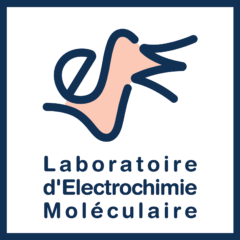Efficient Visible‐Light‐Driven Carbon Dioxide Reduction using a Bioinspired Nickel Molecular Catalyst
Résumé
Inspired by natural enzymes, this study presents a nickel-based molecular catalyst, [Ni$^{II}$(N$_2$S$_2$)]Cl$_2$ (NiN$_2$S$_2$, N$_2$S$_2$= 2,11dithia [3,3](2,6)pyridinophane), for the photochemical catalytic reduction of CO 2 under visible light. The catalyst was synthesized and characterized using various techniques, including liquid chromatography-high resolution mass spectrometry (LC-HRMS), UV-Visible spectroscopy, and X-ray crystallography. The crystallographic analysis revealed a slightly distorted octahedral coordination geometry with a mononuclear Ni 2 + cation, two nitrogen atoms and two sulfur atoms. Photocatalytic CO$_2$ reduction experiments were performed in homogeneous conditions using the catalyst in combination with [Ru(bpy)$_3$ ]Cl$_2$ (bpy = 2,2'-bipyridine) as a photosensitizer and 1,3-dimethyl-2phenyl-2,3-dihydro-1H-benzo[d]imidazole (BIH) as a sacrificial electron donor. The catalyst achieved a high selectivity of 89 % towards CO and a remarkable turnover number (TON) of 7991 during 8 h of visible light irradiation under CO$_2$ in the presence of phenol as a co-substrate. The turnover frequency (TOF) in the initial 6 h was 1079 h$^{-1}$ , with an apparent quantum yield (AQY) of 1.08 %. Controlled experiments confirmed the dependency on the catalyst, light, and sacrificial electron donor for the CO$_2$ reduction process. These findings demonstrate this bioinspired nickel molecular catalyst could be effective for fast and efficient photochemical catalytic reduction of CO$_2$ to CO.
Domaines
Catalyse| Origine | Publication financée par une institution |
|---|


